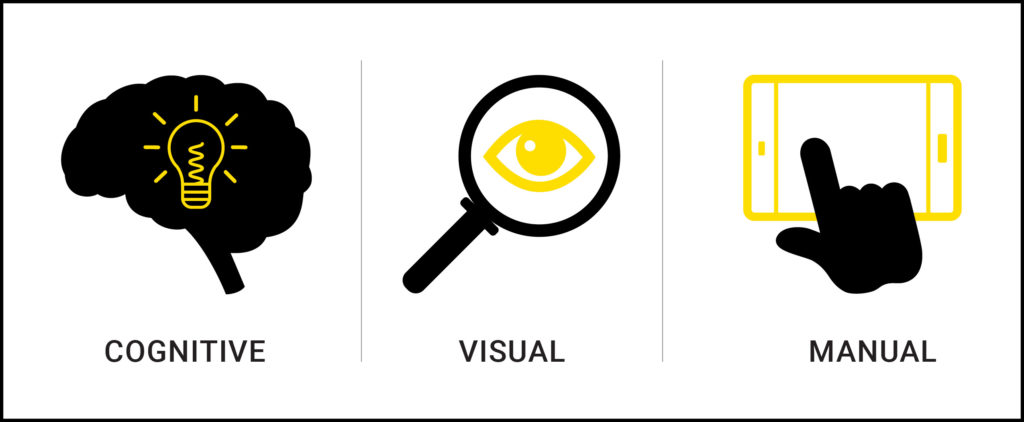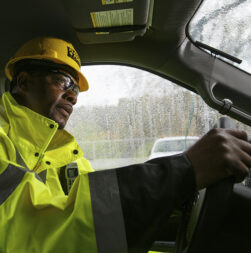One of the biggest safety threats in any work zone is moving traffic. That threat exponentially increases when drivers are distracted. According to research conducted by the University of Missouri, distracted driving can increase the crash and near-crash risk in a work zone by 546%.
In fact, inattentive motorists are responsible for 1 in 4 car accidents in the United States. The Center for Disease Control and Prevention (CDC) reports that in the U.S., distracted driving kills nine people and injures another 1,000 people each day.
Scott Higley, Director of Strategic Communications, Georgia Department of Transportation, noted on the GDOT blog, “Distracted driving is an issue not only in Georgia but also across the country. And texting while driving isn’t the only form of distraction. From using social media and email to eating and drinking to talking on the phone or to passengers, these activities divert your attention away from safely operating a vehicle. And distractions can cost lives.”
Higley adds, “With more than 70 percent of fatalities on Georgia’s roadways attributed to driver behavior, many of these deaths are preventable. They’re preventable because driver behavior is a choice.”
While many people now equate distracted driving with smartphones, distracted driving includes a range of activities. Any pursuit that takes full attention away from driving is distracting and can be dangerous.

Three Types of Distracted Driving
Distracted driving is often divided into three categories: manual, cognitive, and visual. All three types include activities that can endanger passengers and present particular hazards to people in work zones:
-
Manual Distraction
Many drivers multi-task when driving. Some activities, such as listening to music or having a conversation, can help keep a driver alert. However, when those activities require the driver to take their hands off the wheel for any reason, it creates a manual distraction. Common manual distractions including eating or drinking while driving, adjusting the radio or car settings, holding a mobile phone or navigation device, reaching for items, searching for things, or smoking.
-
Cognitive Distraction
Focusing on the road for long periods can be challenging, so many drivers use media or conversation to stay alert. However, becoming too engaged with cognitive activities can reduce road awareness and impaired reaction times, especially in a work zone. Common cognitive distractions include listening to music or programs, conversations with passengers, arguments, talking on the phone (even when it’s hands-free), stress, exhaustion, or being lost in thought.
-
Visual Distraction
Visual distractions are especially hazardous. While the human brain is wired to think about and hear many things simultaneously, it is not wired to absorb a range of visual images. Anything that takes your eyes off the road creates an especially perilous distraction. Common visual distractions include electronic devices such as a mobile phone or GPS, looking for items in the vehicle, adjusting the radio or smartphone, adjusting vehicle settings, and reading billboards.
Staying Focused Increases Work Zone Safety
Losing your focus for more than two seconds doubles your risk of an accident. A quick distraction may cause a work zone crash or even a fatality. That’s why staying focused and alert is the best way to increase work zone safety and keep drivers and road crews safe.
Want to learn more about distracted driving? Check out these resources:
Driving Tips for Safer Traveling
Drive Safe! Tips from Driving Pros



